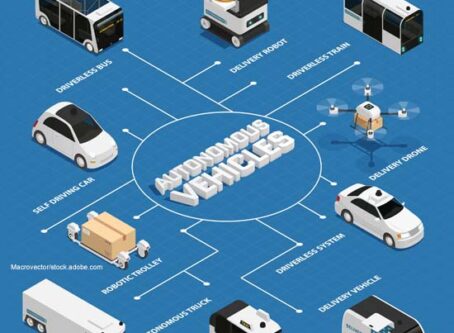Personal conveyance: How and when to use it
With strict regulations for hours-of-service, the use of personal conveyance can be an important tool for truckers. However, it can be a confusing area for some.
Personal conveyance is used to account for the movement of a truck while the driver is off-duty. Current regulatory guidance from the Federal Motor Carriers Safety Administration states that:
“A driver may record time operating a commercial motor vehicle for personal conveyance as off-duty only when the driver is relieved from work and all responsibility for performing work by the motor carrier. The CMV may be used for personal conveyance even if it is laden, since the load is not being transported for the commercial benefit of the motor carrier at that time. Personal conveyance does not reduce a driver’s or motor carrier’s responsibility to operate a CMV safely. Motor carriers can establish personal conveyance limitations either within the scope of, or more restrictive than, this guidance, such as banning use of a CMV for personal conveyance purposes, imposing a distance limitation on personal conveyance, or prohibiting personal conveyance while the CMV is laden.”
Drivers can use personal conveyance in a number of ways
Tom Crowley, a compliance and regulatory expert with the Owner-Operator Independent Drivers Association, says the use of personal conveyance can benefit drivers looking for safe parking following the end of their 14-hour clock.
“You would have drivers that were at a shipper-receiver who would run out of their 14-hour clock. And so technically they couldn’t drive off of their shipper-receiver’s property,” Crowley said. “Yet the property owner was saying, ‘Hey, you get your truck off my property or I’m going to call the cops!’ That would leave the drivers in the lurch. So the feds came back and said, ‘You can use personal conveyance from a shippers-receivers, if you run out of hours, to the closest option for parking, Not in the way of your next load, but the closest option. So the personal conveyance comes into play there where you’re out of hours, but you got to leave the property. You can use personal conveyance so that you don’t have to show violation to your closest parking option. That’s one way it’s used for the average driver out on the road.”
A former driver, Crowley would drive his truck to the yard and back home every day. By using personal conveyance, his hours would start when he got to the yard and would end when he left the yard.
Additional instances for the use of personal conveyance, according to FMCSA guidance:
- Time spent traveling from a driver’s en route lodging (such as a motel or truck stop) to restaurants and entertainment facilities.
- Commuting between the driver’s terminal and their residence, between trailer-drop lots and the driver’s residence, and between work sites and their residence.
- Time spent traveling to a nearby, reasonable, safe location to obtain required rest after loading or unloading.
- Moving a commercial motor vehicle at the request of a safety official during the driver’s off-duty time.
- Time spent transporting personal property while off-duty.
- Authorized use of a commercial motor vehicle to travel home after working at an offsite location.
Logging personal conveyance
Crowley said that drivers using a paper record of duty status can use the provision without changing their current logging procedures. However, drivers using an ELD will want to account for the miles put on their truck while they’re off duty.
“You don’t have to keep any records. Technically, when you are on personal conveyance, there are no hours of service to cover you, so you don’t have to log anything,” Crowley said. “That said, you’ve got an ELD that’s tracking every mile you go, most folks do now. So they need to put the ELD into a status that will show personal conveyance rather than keeping their hours. So that’s when they would either use the PC button, or technically they could log totally out of the system. But then they would still have those unaccounted for miles to deal with.”
As part of the FMCSA’s ELD rule, manufacturers are required to include a special driving category for personal conveyance.
Crowley said drivers need to be aware of instances where personal conveyance and its use can be misinterpreted.
“You’re out of deodorant. You run to Walmart, buy some deodorant and go back to the truck shop. That’s a personal conveyance move,” he said. “But here’s the thing. If while you’re at Walmart, you buy you a gallon of oil for your truck, you’ve negated the personal conveyance. Because now it was a business-related move. Just to, you know, keep it complicated.”
While some gray areas still exist for the use of the provision, Crowley said that the most common instance for its misuse stems from drivers inaccurately determining off-duty status.
“A lot of drivers have the tendency to think if they are not under a load that they are on personal conveyance,” he said. “So I leave Kansas City, I go out to L.A. to deliver my load and then I’m going back to KC empty. You cannot personal conveyance back to Kansas City empty because that is part of your trip. But drivers tend to think that if I am not under dispatch, you know, I’m not under a load that I can use personal conveyance. And I all the time have to say no. ‘Well, I’ve been doing that.’ Well, you haven’t been caught. That’s the only thing.”
Other instances that would not qualify as personal conveyance, according to the current FMCSA regulatory guidance, are as follows:
- The movement of a commercial motor vehicle in order to enhance the operational readiness of a motor carrier. For example, bypassing available resting locations in order to get closer to the next loading or unloading point or other scheduled motor carrier destination.
- After delivering a towed unit, and the towing unit no longer meets the definition of a CMV, the driver returns to the point of origin under the direction of the motor carrier to pick up another towed unit.
- Continuation of a commercial motor vehicle trip in interstate commerce in order to fulfill a business purpose, including bobtailing or operating with an empty trailer in order to retrieve another load or repositioning a tractor or trailer at the direction of the motor carrier.
- Time spent transporting a commercial motor vehicle to a facility to have vehicle maintenance performed.
- Time spent traveling to a motor carrier’s terminal after loading or unloading from a shipper or a receiver.
Knowing when to use – and more importantly when not to use – personal conveyance is important. Drivers who inaccurately use personal conveyance are subject to penalty.
“That would be falsification of the logbook and that would equal immediate out of service for 10 hours,” Crowley said. “And that is absolutely what happens to them.”
Changes to FMCSA’s guidance on personal conveyance
On March 29, 2022, the Commercial Vehicle Safety Alliance petitioned FMCSA to amend the current guidance regarding the use of personal conveyance. In its petition, CVSA has requested the administration better define it by adding a maximum distance and/or time drivers could operate under that designation.
“Under the current guidance, a driver could, in theory, drive hundreds of miles over the course of several hours all under the designation of personal conveyance,” the alliance wrote in its petition to FMCSA. “This presents the opportunity for increased driver fatigue and risk on our roadways, as drivers may decide to travel hundreds of miles in order to strategically relocate to an alternate location after driving a full day. Without a maximum daily distance and/or time limit, the guidance presents a legal way for drivers to significantly extend their driving time and the furtherance of their load while recording personal conveyance. The hours-of-service limits exist to mitigate the impacts of fatigue on highway safety. Allowing significant extension of driving time with the use of personal conveyance undermines the goals of the hours-of-service regulations.”
CVSA initially petitioned FMCSA to make this change on Dec. 17, 2018, prior to the current revised guidance being put into effect. That petition was denied on Sept. 18, 2020.
Canadian truckers are limited in the distance they can travel under the use of personal conveyance. Current guidelines limit its use to 75 km (around 47 miles) per day. The driver must logged as off-duty with the truck unloaded and trailers unhitched.
According to CVSA, false records of duty status violations represented the 3rd most documented driver violation in 2021. In June 2021, a violation code was added to roadside inspection software which allowed inspectors to note when false record of duty status violations were a result of the misuse of personal conveyance. As of Jan. 28, there had been reported 3,041 violations indicating the misuse of personal conveyance. Additionally, 61% of those violations resulted in the driver being placed out of service because their misuse of personal conveyance was an attempt to conceal extra driving time.
“By establishing a maximum allowed distance or time for personal conveyance, FMCSA will not only eliminate confusion and inconsistent enforcement among inspectors on this issue but will also ensure safer roads as commercial motor vehicle drivers and motor carriers are on notice that personal conveyance time cannot be used as a safe harbor for driving hundreds of miles after exhausting their hours of service.” LL









